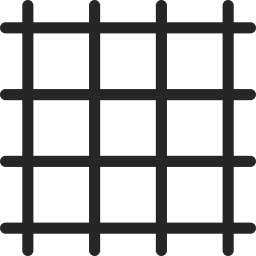Grid martingale trading can be tempting for new traders. It seems like a surefire way to make money, regardless of the market’s direction. But hold on! Like any strategy, it carries inherent risks. The key lies in finding the sweet spot between potential gains and the risks you’re comfortable with.
Understanding Your Risk Tolerance
Everyone has a different risk tolerance. Before you jump into grid martingale trading, figure out how much you can afford to lose on a trade. Losses can be emotionally challenging, so having a solid risk management plan in place helps you stay calm and make sound decisions.
Practice Makes Perfect (and Less Risky)
Before risking real money, play around on a demo account for a few months. This lets you experiment with strategies and get a feel for how markets move. But remember, calm markets can trick you into a false sense of security. Real markets are volatile, so your risk management plan needs to be flexible. Here’s a tip: build in a buffer zone. For example, if your demo trades with 20 positions, spaced 300 pips apart, and a maximum of 5 lots in a $10,000 account feel comfortable, consider increasing your account size to $12,000 or adjusting risk to 350 pips. This buffer gives you breathing room if the market throws a curveball.
Taming Drawdowns in Grid Martingale
Grid martingale adds positions as the market moves against you, aiming to close them all in profit. So, managing drawdowns, temporary losses, is crucial. A common goal is to keep drawdowns at 10-20% of your account value. This allows some wiggle room if you need to step in and adjust your trade. Imagine a $10,000 account with $8,000-$9,000 in floating losses. With such a big drawdown, even recovering is risky. One mistake could trigger a margin call, forcing you to close all your trades at a loss.
Key Settings for Smart Risk
Now, let’s get specific about managing risk in grid martingale. We’ll focus on four key settings: Starting Lot Size, Multiplier, Maximum Trades, and Gap Pips. Understanding each is essential (refer to the Trade Management section on Parameters). Before you tweak these settings, consider two factors:
- Maximum Distance: This is the total distance between your first and last trade in the grid. To figure this out, use the weekly volatility of your chosen trading symbol and round it up to a number divisible by 50. For example, if USDCAD’s weekly volatility is 271.0, round it up to 300.0. This becomes your maximum distance.
- Maximum Lot Size: This depends on your comfort level and risk tolerance. A common starting point is 1 lot for every $10,000 in your account balance. You can adjust this as you gain experience.
Setting Up Maximum Distance Made Easy
Here’s a breakdown of how I set the maximum distance. Once you have the weekly volatility rounded up (e.g., 300 pips for USDCAD), make sure the distance between your first and last trade is at least 300 pips when configuring Gap Pips and Maximum Trades. For example, if Gap Pips is 30 and Maximum Trades is 15, the total distance would be 450 pips.
Maximum Lot Size: Finding Your Comfort Zone
There’s no magic formula for maximum lot size. It’s based on your personal risk tolerance. A common starting point is 1 lot for every $10,000 in your account balance. Once you have this, make sure the combined total of all lots (considering Starting Lot Size, Multiplier, and Maximum Trades) doesn’t exceed 1 lot when reaching the maximum trades. Our Simulation Tools can help you calculate this easily. Check out Simulation Tools.
The Bottom Line: Trade Safe, Trade Smart
Effective risk management is the cornerstone of successful grid martingale trading. By carefully considering parameters like maximum lot size and starting lot size, you can find a good balance between risk and reward. Tools like our Simulation Tools can further enhance your decision-making and improve your results. Remember, successful trading requires constant monitoring, adjustments, and a disciplined approach to risk management.
